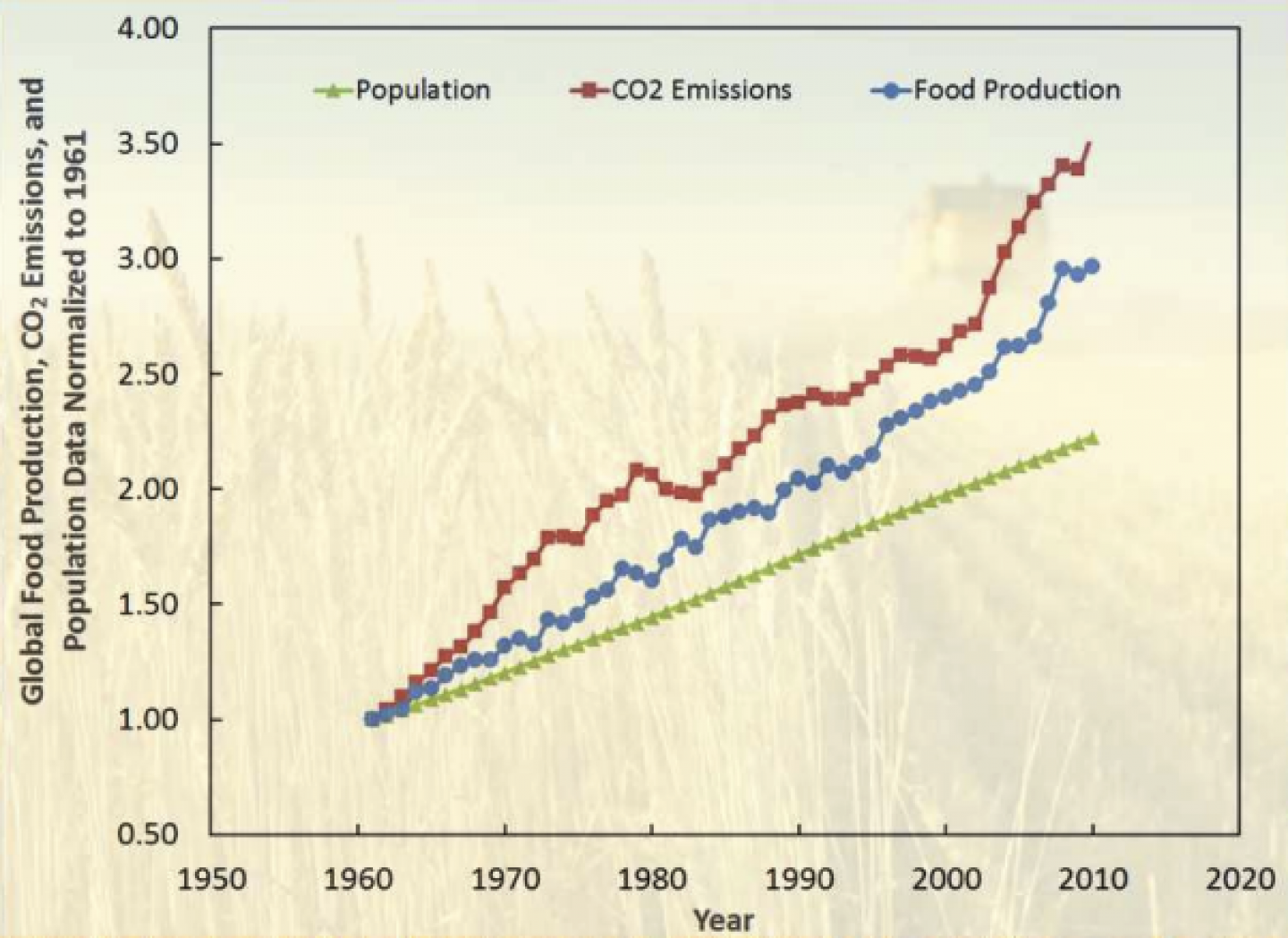The Positive Externalities of Carbon Dioxide
Bottom Line: Few studies have attempted to examine the monetary benefits of more atmospheric carbon dioxide (CO2), rising since the Industrial Revolution and driven by the surging use of carbon-based fossil fuels. A major positive externality of CO2 is the benefit of enhancing crop production. The present analysis offers a quantitative estimate of the direct monetary benefits of atmospheric CO2 enrichment on both historic and future global crop production. The conclusion is that this amounts to many trillions of dollars over the 1960-2050 time period. Little to no weight should be given to the much-reported “social cost of carbon” analyses until they factor in these benefits of CO2.
The Industrial Revolution was accompanied by previously unimagined advancements in technology and scientific expertise that initiated a great transformation within the global enterprise of agriculture. This paved the way toward higher crop yields and increased global food production, a highly welcomed societal benefit. The source of this ancillary aid to agriculture was the increased levels of atmospheric carbon dioxide (CO2) that mostly came from the combustion of carbon-based fossil fuels, used as the primary sources of energy that enabled the new era of machines and manufacturing.
This study seeks to investigate the monetary benefits of higher amounts of atmospheric CO2 on plant production.
For a 300 parts per million (ppm) increase in the air’s CO2 content, for example, herbaceous plant biomass is typically enhanced by 25 to 55%.
More CO2 and higher crop production offer a positive externality that remains absent from today’s state-of-the-art social cost of carbon (SCC) calculations that are being deployed to discourage the use of fossil fuels.
The results here indicate that the annual total monetary value of this benefit grew from $18.5 billion in 1961 to over $140 billion by 2011, amounting to a total sum of $3.2 trillion over the 50-year period 1961-2011.
Further, projecting the monetary value of this positive externality forward in time reveals it will likely bestow an additional $9.8 trillion on crop production from 2012-2050.
Until these benefits of more CO2 are fully incorporated into SCC, little if any weight should be placed on current SCC calculations.
Read the full study here.
Rising Population, CO2 Emissions, and Food Production

Findings:
• As carbon-based fossil fuels became the primary sources of energy, more atmospheric CO2 since the Industrial Revolution has provided a huge positive externality of higher crop production.
• This study concludes that the annual total monetary value of this benefit amounted to a total sum of $3.2 trillion over the 50-year period 1961-2011, with an additional $9.8 trillion on crop production from 2012-2050.
• The "social costs of carbon" analysis used to push back on the use of carbon-based fossil fuels must factor in these benefits of more CO2 leading to higher crop production, or risk being incomplete.
Read the full study here.




